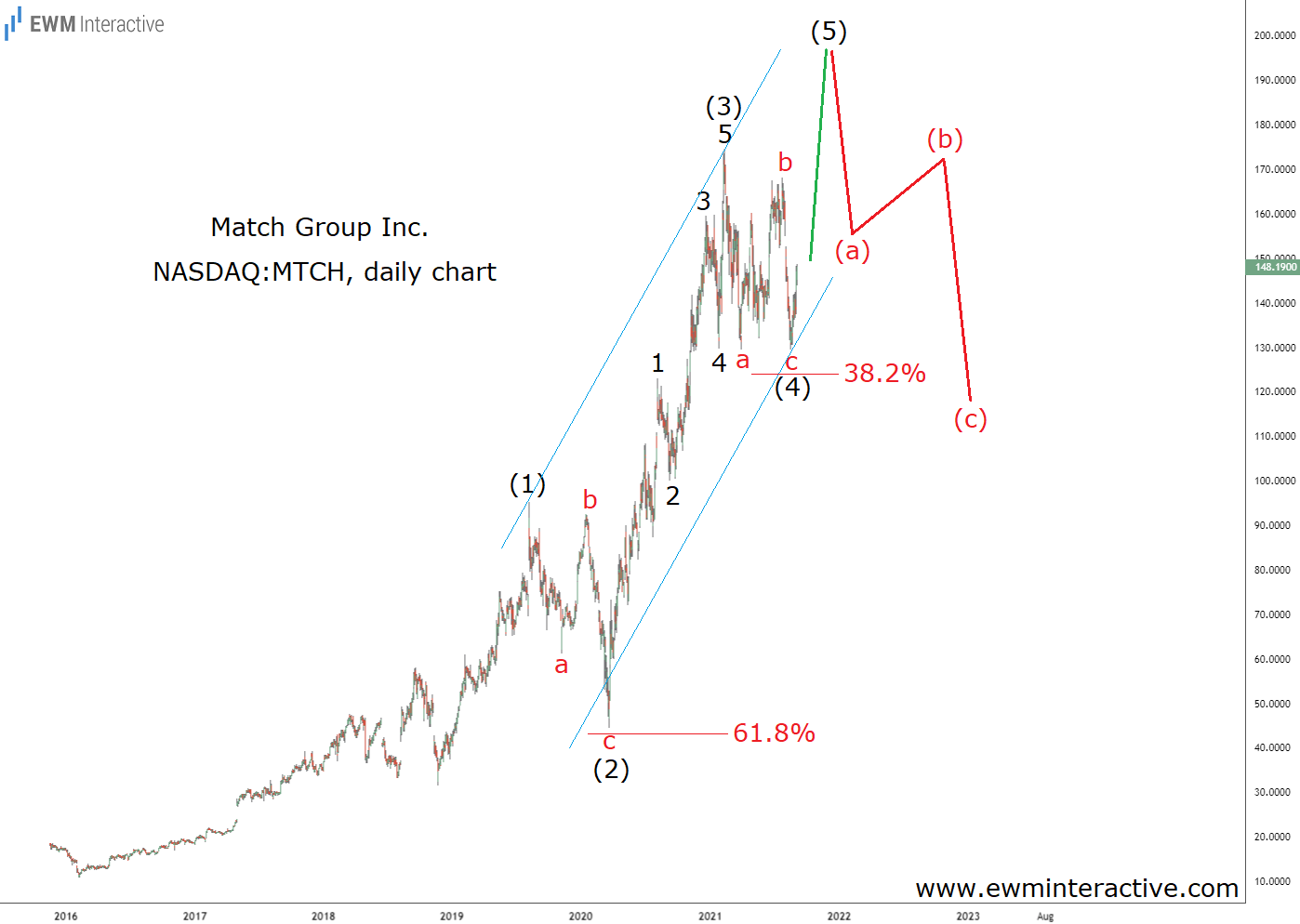Match Group (NASDAQ:MTCH) rose over 10% in post-market trading Friday following reports that it was going to be included in the S&P 500. The company, which owns Tinder, OkCupid, and most other major dating apps in the U.S., has a market cap of over $41B.
Despite the anticipated “summer of love,” though, this is not Match's highest ever valuation. At $148 a share, the stock is actually down from its all-time high of nearly $175 reached in February. Friday’s post-market jump to $164 makes sense, of course. The S&P 500 inclusion is virtually guaranteed to attract plenty of institutional money to the name. Individual long-term investors, however, might want to think twice before following suit.

The daily chart above reveals that the uptrend from the February 2016 bottom is an almost complete five-wave impulse. The pattern is labeled (1)-(2)-(3)-(4)-(5) and has been developing within the parallel lines of a trend channel. The five sub-waves of wave (3) are also visible.
Valuation And Elliott Wave Analysis Caution Against Buying Match Stock
Note that waves (2) and (4) ended shortly before touching the 61.8% and 38.2% Fibonacci levels, respectively. If this count is correct, Match is currently trading in its fifth and final wave. As per the Elliott Wave theory, a three-wave correction follows every impulse. It usually erases the entire fifth wave.
Wave (5) is supposed to exceed the top of wave (3), so targets above $175 make sense. We wouldn’t be surprised if the stock makes it to $200 a share. In our opinion, that should be seen as a final take-profit opportunity by the bulls. The anticipated correction has the potential to drag Match back to the support of wave (4) near $130 or even lower.
Besides, at $148 a share, Match trades at 13.6 times its 2021 sales and a forward P/E ratio of 63. At $200, the earnings multiple would’ve expanded to 85.
The S&P 500 inclusion certainly gave the bulls an excuse to make the stock even more expensive. This doesn’t make it a sound investment, though. Both Elliott Wave analysis and the company’s valuation caution against it.
